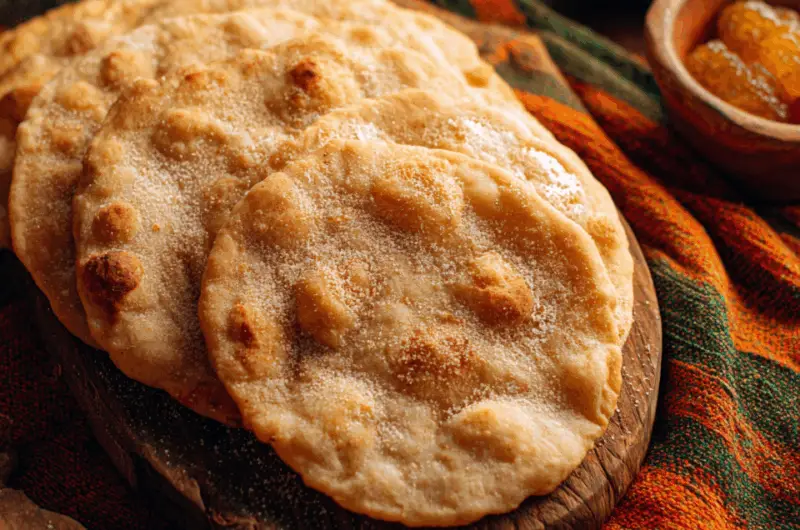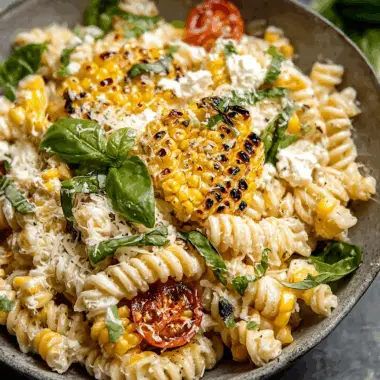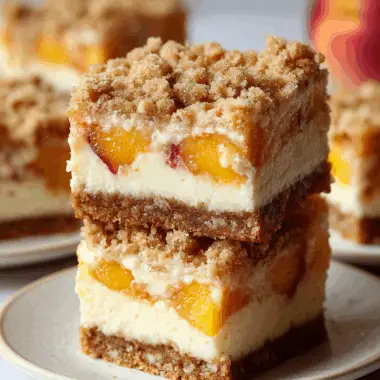The coyota is a beloved pastry hailing from the northern Mexican state of Sonora, traditionally made with a simple dough and a rich piloncillo filling that caramelizes beautifully as it bakes. These hand-held treats resemble oversized cookies with a lightly crisp exterior and sweet, melty center that fills the room with the scent of cinnamon and sugar. Coyotas are more than just a dessert they’re a cultural emblem, a treat passed down from generations of abuelas who baked them with love. Whether enjoyed fresh out of the oven or packed as a snack with coffee, they embody the comforting spirit of homemade Mexican sweets. Perfect for holidays, family gatherings, or simply indulging in heritage, coyotas are a heartwarming nod to tradition.
Full Recipe:
Ingredients:
-
2 cups all-purpose flour
-
1/2 cup vegetable shortening or lard
-
1/4 cup sugar
-
1/4 cup water
-
1 teaspoon ground cinnamon
-
1 teaspoon baking powder
-
1/2 teaspoon salt
-
1 cup grated piloncillo (or dark brown sugar)
Directions:
-
Preheat oven to 350°F (175°C) and line a baking sheet with parchment paper.
-
In a large bowl, combine the flour, cinnamon, baking powder, and salt.
-
Cut in the shortening until the mixture resembles coarse crumbs.
-
Gradually add water and mix until a dough forms.
-
Divide dough into equal portions and roll each into a ball. Flatten each ball into a thin disc.
-
Place a spoonful of grated piloncillo in the center of one disc, cover with another disc, and seal the edges using a fork.
-
Repeat with remaining dough and filling.
-
Place assembled coyotas on the baking sheet and bake for 20-25 minutes or until lightly golden.
-
Allow to cool slightly before serving.
Prep Time: 20 minutes | Cooking Time: 25 minutes | Total Time: 45 minutes
Kcal: 210 kcal | Servings: 8 servings
Coyotas de Piloncillo: A Sweet Sonoran Legacy Worth Celebrating
Few desserts are as steeped in tradition and nostalgia as Coyotas de Piloncillo. Originating from the northern Mexican state of Sonora, coyotas are large, round, filled pastries that are part cookie, part pie, and wholly irresistible. Their simple ingredients and rustic preparation techniques make them not only accessible for home bakers but also a symbol of heritage and culinary storytelling.
In this article, we’ll explore the cultural roots, history, unique flavor profile, and continued relevance of coyotas in modern kitchens. Whether you’re a seasoned pan dulce lover or discovering Mexican pastries for the first time, this guide will enrich your appreciation of this timeless treat.
A Bite of Sonora’s Past: The Origins of Coyotas
Coyotas trace their origins to the city of Hermosillo in Sonora, Mexico. This arid region in northern Mexico is rich in tradition and has long been influenced by both indigenous and Spanish colonial food customs. Coyotas emerged as a humble dessert from the hands of local bakers and home cooks, particularly women who passed their recipes down through generations.
The word “coyota” is said to be derived from the Nahuatl language, and over time, it came to refer to these sweet treats made with a wheat-based dough and a filling of piloncillo, a type of unrefined whole cane sugar that is commonly used throughout Latin America. Traditionally baked in wood-fired ovens, coyotas were initially sold by street vendors and at local markets, becoming an integral part of Sonoran daily life.
What Makes Coyotas Unique?
At first glance, coyotas may look like oversized sandwich cookies. But their uniqueness lies in the contrast of textures and the simplicity of flavors. The exterior is lightly crispy, with a thin, golden crust that gives way to a chewy, almost gooey interior filled with rich, molasses-like piloncillo. The taste is both nostalgic and distinct sweet, earthy, and slightly smoky.
Unlike overly decadent pastries that rely on creams or elaborate toppings, coyotas are refreshingly minimalist. Their rustic charm comes from the way they’re handmade often with visible fork-sealed edges, slight cracks, and golden-brown finishes proof that perfection isn’t required to create something delicious and meaningful.
The Role of Piloncillo in Traditional Mexican Baking
Piloncillo is a key ingredient in many Mexican sweets, and it’s the star of the coyota. Made by boiling and evaporating sugarcane juice until it solidifies into cones or blocks, piloncillo retains natural molasses and minerals that give it a more complex flavor than regular refined sugar.
In coyotas, the grated piloncillo softens and melts as it bakes, forming a luscious filling that spreads slightly and caramelizes. It adds a depth of flavor that sugar simply can’t replicate earthy, robust, and faintly smoky. The aroma alone is enough to transport you straight into a Mexican kitchen.
Besides taste, piloncillo is an ingredient with cultural depth. Used in drinks like atole and café de olla, as well as in tamales and empanadas, piloncillo connects Mexican sweets to indigenous and colonial histories, making it more than just a sweetener it’s a heritage food.
Coyotas and the Tradition of Pan Dulce
Coyotas are part of the larger Mexican tradition of pan dulce (sweet bread), which includes iconic treats like conchas, orejas, and empanadas. While each region of Mexico has its own variations of pan dulce, coyotas are distinctly Sonoran.
Unlike many other types of pan dulce that rely on yeasted doughs, coyotas use a simple flour-based dough with shortening or lard, giving them a slightly flaky, biscuit-like texture. They’re more shelf-stable than softer breads, making them ideal for gifting, travel, or storing for later enjoyment with coffee or hot chocolate.
In Sonora, and increasingly in other parts of Mexico and the southwestern United States, coyotas are commonly enjoyed as a mid-morning or afternoon snack. They’re often wrapped in parchment or wax paper and sold at panaderías, roadside stalls, or festivals, serving as edible souvenirs of tradition.
Modern Variations and New Twists
Though the classic piloncillo filling remains the most traditional and beloved, modern bakers have embraced new variations to cater to evolving tastes. Some popular adaptations include:
-
Jam-filled coyotas: Guava, fig, or strawberry preserves add a fruity twist.
-
Cajeta coyotas: A rich goat’s milk caramel for an ultra-smooth center.
-
Nut-stuffed coyotas: Pecans or walnuts add crunch and complexity.
-
Savory versions: Some creative chefs are experimenting with cheese, chorizo, or herb-infused fillings.
These variations don’t stray far from the heart of the original coyota but instead reflect the dynamic evolution of Mexican cuisine. They also make coyotas more appealing to a global audience seeking both authenticity and novelty.
The Emotional Connection to Coyotas
For many Mexican and Mexican-American families, coyotas are more than just a dessert they’re a symbol of home. Baking coyotas can be an act of cultural preservation, a way to pass down memories, stories, and techniques through generations.
The smell of piloncillo baking, the feel of the dough in your hands, the familiar look of fork-sealed edges these details evoke comfort and pride. Especially for those living away from their native land, recreating traditional recipes like coyotas offers a powerful bridge to the past.
Coyotas are often brought to family reunions, shared during holidays, or given as gifts. They remind people of abuelas who baked them from memory, of kitchen counters dusted with flour, and of the resilience of cultural identity preserved through food.
How to Enjoy Coyotas Today
If you’ve never tried a coyota before, the best way to enjoy one is warm, right out of the oven perhaps with a hot cup of café de olla or Mexican hot chocolate. Their crisp edges and soft center make them ideal for dunking or savoring slowly, bite by bite.
Coyotas also make thoughtful gifts. They hold up well for shipping or storage, especially when wrapped in wax paper and tied with twine. Presenting them in a box with a handwritten recipe card makes for a beautiful gesture that shares a piece of heritage.
Additionally, coyotas are a great entry point for those wanting to explore Mexican baking. Their ingredient list is short, and the technique is approachable. You don’t need fancy tools or rare ingredients just time, care, and a desire to create something meaningful.
Advertisement
Why Coyotas Deserve a Place in Your Kitchen
In a world filled with flashy desserts and complicated confections, coyotas offer something refreshingly grounded. They’re a reminder that flavor doesn’t have to be fussy, that history can be delicious, and that food is one of the most enduring ways we tell our stories.
By baking coyotas, you’re participating in a living tradition one that dates back centuries and continues to bring joy to people around the world. Whether you follow the classic piloncillo version or put your own twist on it, you’re helping keep the spirit of Sonora alive.
Conclusion:
Coyotas de Piloncillo are more than just a sweet treat they’re a cultural artifact, a piece of edible history, and a delicious way to connect with Mexican heritage. Their simplicity belies their depth, both in flavor and significance.
For food lovers, bakers, and cultural enthusiasts alike, making coyotas is a rewarding experience that ties you to generations of cooks who have come before. Each bite tells a story of resilience, creativity, and the enduring power of food to bring people together.








